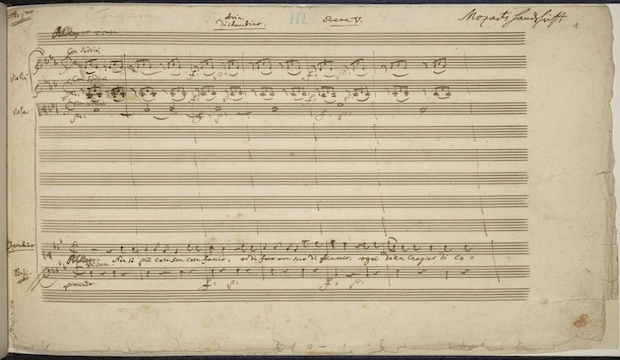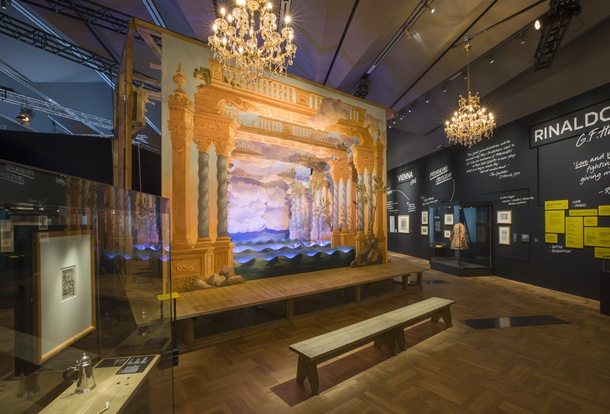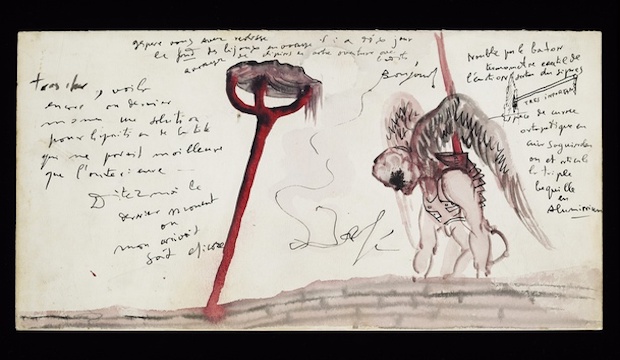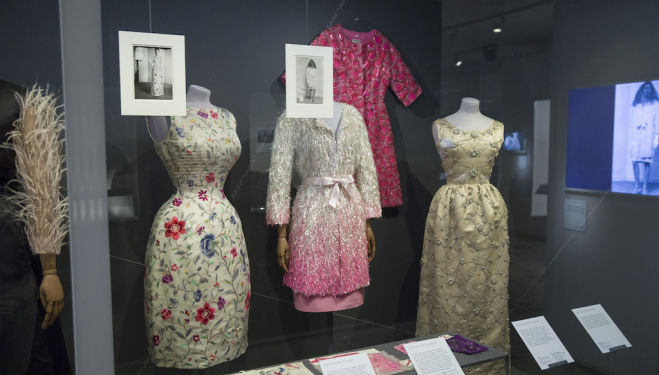
In this international first, the Victoria and Albert Museum is collaborating with the Royal Opera House to bring London the world’s first and only grand-scale exhibition on opera. Spanning genre and medium, period and place, Opera: Passion, Power and Politics is a grandiose celebration of a 400-year-old art form. Never snobby or overbearing, this masterly exhibition is as seductive and erotic as it is enlightening and engaging, and is perfect for opera virtuosos and intimidated newcomers alike.
Opera: Passion, Power and Politics tells its story through seven cities and the seven operatic premieres held there, beginning in 17th-century Venice and finishing in 20th-century St. Petersburg. These seven performances trace the social, political and cultural landmarks in European operatic history as well as the autobiographical context of their composers. A slick high-tech headset accompanies your journey, playing snippets of music that change seamlessly without glitch to echo the objects around you. It's an immersive experience like no other. 
Draft of part of Cherubino’s Act I aria ‘Non so più cosa son’ (K492, no. 6)Wolfgang A. Mozart (1756-1791)Autograph score, 1786 British Library, Zweig MS 57© British Library, London, UK Bridgeman Images
This sense of the unexpected is one of the exhibition’s strengths. Using the twists and turns of the V&A's swanky new Sainsbury Gallery to shock and delight the viewer, curator Kate Bailey stages a masterpiece as impressive as its subjects.

Opera: Passion, Power and Politics installation image, 27 September 2017. (c) Victoria and Albert Museum, London
Venetian goblets soon give way to the silver pots and pipes of the coffee house. It's 1711 and we’ve journeyed to London. There’s a real sock in the jaw crowd-pleaser in the shape of a full-size moving set from Handel’s Rinaldo. Undulating waves conceal and reveal the tips of mermaids' tails while a little ship with a shivering gold chain sails across the stage. It’s charming, and a bold demonstration of the visual stage effects that took London by storm in the early 1700s.
While there’s already been some grumbling about whether the choices of operas for each city were the right ones, the decision to explore London through Rinaldo, an Italian opera written by a German for an English audience, and the xenophobic furore it caused, seems suitably well-timed to us.
There are, however, some flat notes. In an attempt to highlight the many social and cultural aspects of each opera, the exhibition has resorted to slinging large ‘handwritten’ notes across the walls. The idea to pithily draw the viewer’s attention to overarching themes is a good one, but it could have been executed with more sensitivity.

Eva Gonzalès (1849–83) Oil on canvas, c.1874 Paris, Musée d'Orsay, gift of Jean Guérard, 1927 © Musee d'Orsay, Paris, France Bridgeman Images
Yet the overall effect of the exhibition does more than enough to compensate for this ungainly explanatory glitch. Strauss's Salomé in 1905 Dresden is particularly wonderful. Exploring the thorny issue of ‘shifting perceptions of women’, we hear the haunting voices of some of the world’s best sopranos and see a blood-drenched Salomé dancing on a screen above a Freudian couch.
Visions of female sexuality abound, but these visions are authored and authorised by men. The exhibition doesn’t shy away from this tension and a breath-taking range of artefacts brings the turn of the century opera to life.
Where else could Oscar Wilde’s Salomé and Aubrey Beardsley’s illustrations of the same subject lie in the same room as a first edition of Freud’s 1895 Studies on Hysteria, Salvador Dali’s costume designs for the opera, and the typewritten letter banning Mahler’s production in Vienna? That’s before we’ve even mentioned Strauss’s Salomé manuscript or the Versace stage costume perched atop the whole room. A rich tapestry of the opera’s influences and interpretations, this is the exhibition at its most impressive.

Costume design for The Executioner Salvador Dalí (1904-89) Ink on paper, 1949 Royal Opera House, London © Salvador Dali, Fundació Gala-Salvador Dalí, DACS 2017
Like its subject, Opera: Passion, Power and Politics weaves art, music, literature, and technology together to draw you into a majestically rich story.
Moreover, in celebration of the exhibition, the V&A has introduced a weekend of free performances, pop-up events, talks and screenings in collaboration with great opera companies. You can read more about the final Opera Weekender (January 19-21) here.
The exhibition has successfully managed to make the history of opera powerful, passionate, political and completely intriguing. You leave with a spring in your step and an unquenchable desire to learn more. An absolute triumph.
Culture Whisper is offering free pairs of tickets to Gold Whisper members to visit Opera: Passion, Power and Politics. Tickets can be redeemed anytime before 16 February.
| What | Opera: Passion, Power and Politics |
| Where | V&A, South Kensington, Cromwell Road, London, SW7 2RL | MAP |
| Nearest tube | South Kensington (underground) |
| When |
30 Sep 17 – 25 Feb 18, 10:00 AM – 6:00 PM |
| Price | £19 |
| Website | Click here to book |




